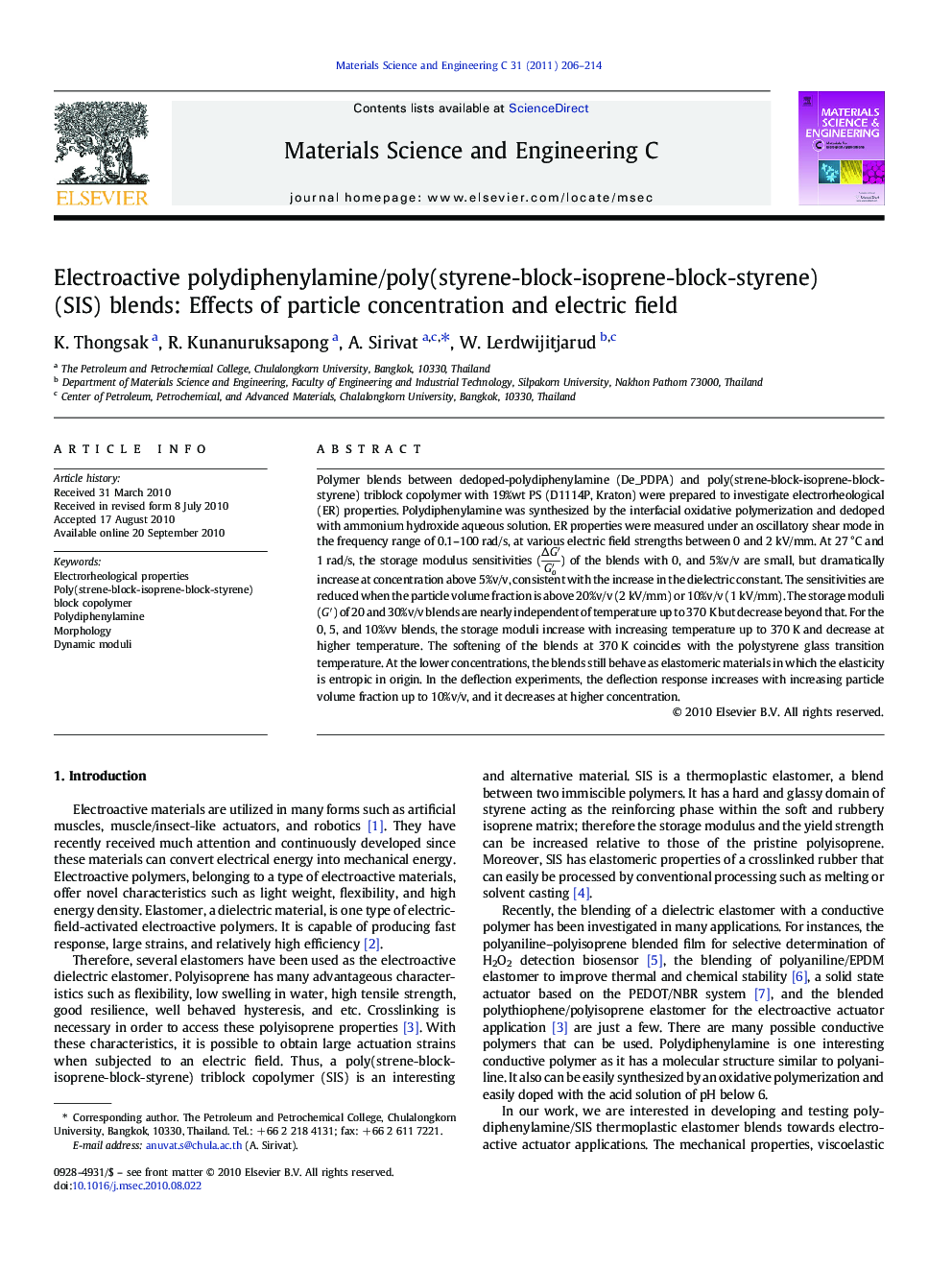| Article ID | Journal | Published Year | Pages | File Type |
|---|---|---|---|---|
| 10614770 | Materials Science and Engineering: C | 2011 | 9 Pages |
Abstract
Polymer blends between dedoped-polydiphenylamine (De_PDPA) and poly(strene-block-isoprene-block-styrene) triblock copolymer with 19%wt PS (D1114P, Kraton) were prepared to investigate electrorheological (ER) properties. Polydiphenylamine was synthesized by the interfacial oxidative polymerization and dedoped with ammonium hydroxide aqueous solution. ER properties were measured under an oscillatory shear mode in the frequency range of 0.1-100 rad/s, at various electric field strengths between 0 and 2 kV/mm. At 27 °C and 1 rad/s, the storage modulus sensitivities (ÎG'G'o) of the blends with 0, and 5%v/v are small, but dramatically increase at concentration above 5%v/v, consistent with the increase in the dielectric constant. The sensitivities are reduced when the particle volume fraction is above 20%v/v (2 kV/mm) or 10%v/v (1 kV/mm). The storage moduli (Gâ²) of 20 and 30%v/v blends are nearly independent of temperature up to 370 K but decrease beyond that. For the 0, 5, and 10%vv blends, the storage moduli increase with increasing temperature up to 370 K and decrease at higher temperature. The softening of the blends at 370 K coincides with the polystyrene glass transition temperature. At the lower concentrations, the blends still behave as elastomeric materials in which the elasticity is entropic in origin. In the deflection experiments, the deflection response increases with increasing particle volume fraction up to 10%v/v, and it decreases at higher concentration.
Related Topics
Physical Sciences and Engineering
Materials Science
Biomaterials
Authors
K. Thongsak, R. Kunanuruksapong, A. Sirivat, W. Lerdwijitjarud,
